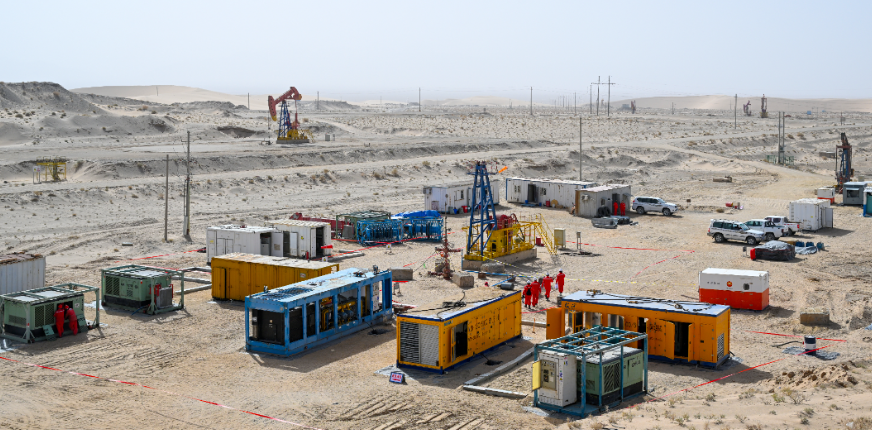At 7 a.m. on September 25, the rumble of machinery echoed through the Qiebli Block in the Kunbei area of Qinghai Oilfield—the pilot project of China’s first compressed air energy storage well group in a low-porosity, low-permeability reservoir on the Qinghai-Tibet Plateau was officially launched. This milestone marks a critical breakthrough for Qinghai Oilfield in the field of new energy storage, injecting new momentum into the construction of an integrated “new energy + energy storage” power system for the oilfield and fueling its green transformation.

Against the backdrop of rapid development in new energy, efficiently storing abundant solar energy generated during the day for use at night has become a key challenge in peak shaving for power systems. Qinghai Oilfield has adopted an innovative approach by turning to abandoned oil and gas well resources. “These wells, extending thousands of meters deep, are like natural ‘gas storage tanks,'” vividly explained Wang Wenxiang, the project site manager.
Energy storage technology is a critical enabler for building a power system with a high proportion of new energy. Utilizing abandoned oil and gas wells and depleted reservoirs for compressed air energy storage is considered an ideal method for large-scale energy storage. In recent years, leveraging advantages such as mineral rights, familiarity with geological formations, and existing well resources, the oilfield has pioneered the application of this energy storage technology. Technicians aptly describe it: “It’s like a massive underground battery. During off-peak hours, we convert surplus electricity into compressed air and inject it into the wells; during peak hours, the compressed air is released to generate electricity.” This “peak shaving and valley filling” model not only enhances grid stability but also improves the capacity for new energy integration.
To unlock the vast application potential of air energy storage technology, the oilfield is advancing systematic testing of a “formation storage + artificial cavity” gas storage construction model in the Qiebli area of Kunbei. To ensure the smooth progress of the project, Qinghai Oilfield conducted multiple rounds of technical demonstrations and experimental adjustments. Data analysis revealed that the post-modification gas injection pressure significantly decreased, while injection and production efficiency substantially improved, marking the first validation of the feasibility of using this underground reservoir for compressed air energy storage.
Through continuous technological breakthroughs, Qinghai Oilfield has successfully completed reservoir fracturing modifications and multi-cycle injection-production tests in single wells, demonstrating the feasibility of the underground reservoir being “injectable, storable, and recoverable.” Currently, the project has developed an injection-production process characterized by “high cushion gas, fast flowback,” which has undergone validation through 112 cycles of injection and production across five stages in three wells. It is reported that this pilot project has expanded from previous single-well tests to simultaneous injection and production across three wells, with a planned duration of 60 days. The aim is to further validate the technical parameters of compressed air energy storage in low-porosity, low-permeability reservoir environments, laying the groundwork for future large-scale applications.


